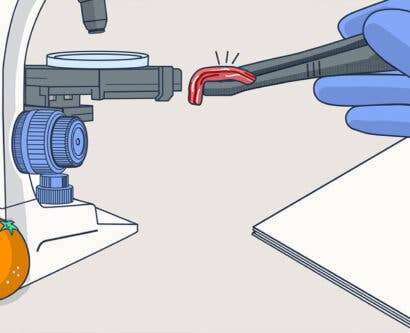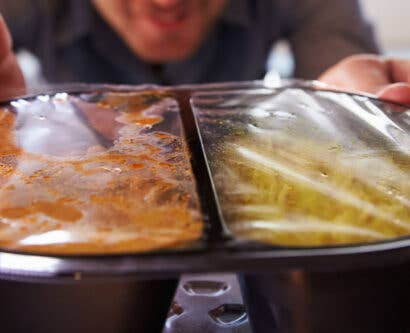What is Cross-Contact?
For people with food allergies, ensuring that they don’t consume foods they’re allergic to is an everyday challenge. Allergens are found in many of the foods we eat and choosing foods that don’t contain them can be difficult.
However, this is not the only concern for food allergy sufferers. Despite their best efforts to avoid certain allergenic foods, they may still be at risk of consuming them if there is cross-contact between allergenic and non-allergenic foods.
This could be life-threatening for somebody with a food allergy. Therefore, it’s crucial that you understand what cross-contact is and how you can avoid it.
What is Cross-Contact?
Cross-contact is a process whereby an allergen is accidentally transferred from one food to another. The contact between these two foods means that their proteins mix and, as a result, each food then contains a small amount of the other food.
Proteins are very small and cannot be seen by the human eye, just like bacteria. However, these proteins could be fatal for someone who is allergic to them.
Cross-contact can occur at different stages of the preparation process, from storage to handling and right through to serving. For example:
- Storing gluten-free pasta in a jar that has previously had normal pasta in.
- Baking cookies on a baking tray and then using it to bake dairy-free cookies.
- Using the same tongs to handle fish as you use to handle vegetables.
- Failing to wash your hands after handling nuts.
- Using a knife to spread peanut butter, not cleaning it properly, and then using it to spread jam.

What is the Difference Between Cross-Contamination and Cross-Contact?
The terms cross-contamination and cross-contact are commonly used interchangeably, even though they are very different:
- Cross-contact is where an allergen is accidentally transferred from a food that contains the allergen to one that does not contain it.
- Cross-contamination is where bacteria are transferred from a surface onto ready-to-eat food.
When talking about allergens, you should always use the term cross-contact as opposed to cross-contamination. Cross-contamination can result in foodborne illness, as the microorganisms that contaminate the food are dangerous for human consumption. Cross-contact, on the other hand, can lead to an allergic reaction.
The major difference between cross-contact and cross-contamination, however, is that you cannot reduce the effects of an allergen once cross-contact has occurred. You can reduce the chances of foodborne illness from bacteria through correct cooking procedures, but you cannot reduce the risk of allergenic contact simply by cooking it. No amount of cooking will remove an allergen from a food and make it safe for somebody who is allergic.
Need a Course?
Our Food Hygiene Training is designed to ensure a comprehensive knowledge of all food safety and hygiene procedures. Find everything from Food Allergen Awareness to Food Labelling Regulations.
How to Avoid Cross-Contact
Because you cannot undo cross-contact once it has occurred, it is essential that you prevent it in the first place. Some ways to avoid cross-contact are:
- Use different food preparation equipment, such as chopping boards and knives, for different kinds of foods. Implementing a colour-coded system is a good way to make things easily identifiable and therefore reduce the chance of a mix-up.
- Clean all equipment thoroughly. To effectively remove the proteins from equipment, you must use soap, like a detergent, and water. Alternatively, you can place it in a dishwasher. Make sure you clean the equipment after every use and before you use it again. Wiping a bowl that contained peanuts with a cloth, for example, is not enough to remove the traces.
- Regularly clean surfaces throughout the day. Clean your surfaces whenever you have prepared something on them. Use soap and water to do this, just like you do with your equipment.
- Always wash your hands after handling different types of food, especially if you have handled one of the main allergens. Wash your hands with soap and water; do not use an alcohol-based sanitiser, as this is insufficient in removing the proteins.
- Keep allergenic and non-allergenic foods in separate storage facilities. This will help to prevent hazards like accidental mixing of foods or selecting the allergenic option by mistake.
- Dispose of any food that could have encountered cross-contact. It’s always better to be safe than sorry. If there’s even a tiny chance of cross-contact, throw the food away.

Cross-contact is very dangerous for somebody who has a food allergy. Even a small amount of an allergen is enough to cause a reaction, so you should ensure that you are preventing contact with allergens at all stages of food preparation and handling.
What to Read Next:
- What are the Four Types of Food Contamination?
- Managing Food Allergies in the Workplace
- What Did We Learn from the Horsemeat Scandal and Should We Still Be Worried?
- Food Allergy Chart Template for Hospitality











